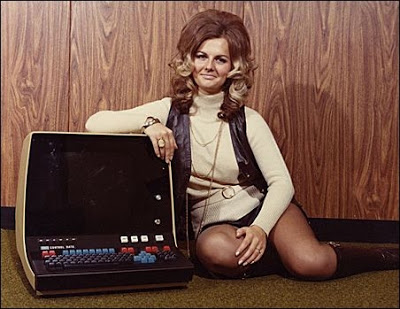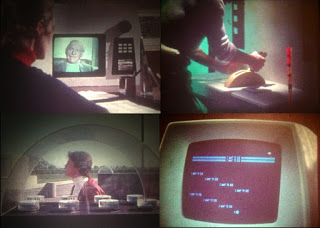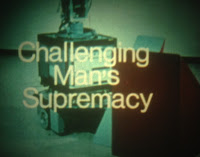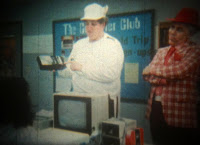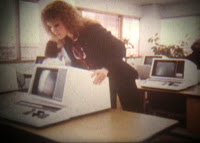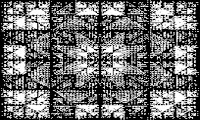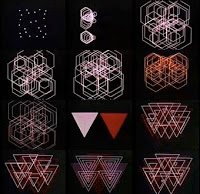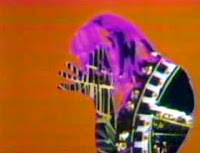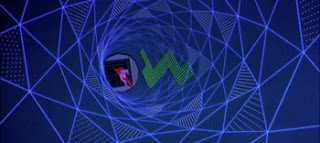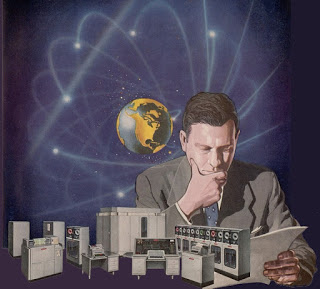Oddball Films Media
•
Jul 10, 2015
Oddball Films presents Computerized - Yesterday's Technology for Tomorrow, a program of vintage films about the rise of computer technology and the early predictions for an automated future. From Isaac Asimov Sci-Fi to early computer generated animation, outdated educational films and more, take a look at the future of technology through the eyes of the past. Look into employment opportunities and find out if Careers in Computer Services (1983) are for you. Isaac Asimov's All The Troubles of the World (1978) details a computercide plot in a world run by the omnipotent Multivac. Di$ney Educational brings us a cheesetastic overview of computer technology for elementary school students (and teachers) in Computers: The Truth of the Matter (1983). Arthur C. Clarke and John Whitney Sr. postulate on some of the exciting and terrifying ways technology effects humanity in Computers: Challenging Men's Supremacy (1976). Then, get a taste of some of the first computer-generated animation and motion graphics with Whitney's Catalog (1961) and his son Michael's mesmerizing Binary Bit Patterns (1969). Gary Demos, the special-effects guru behind Tron and Futureworld creates a mesmerizing light show in I Had an Idea (1972). Plus, the first CG music video, Joni Mitchell's Both Sides Now (1972) from animator John Wilson, and a couple of Top Secret Surprises, too juicy to publicize! Come early for Bell Labs' The Thinking Machines (1968) a camptastic animated explanation of various forms of computer intelligence, from the mathematic to the artistic.
Date: Friday, July 10th, 2015 at 8:00pm
Venue: Oddball Films, 275 Capp Street San Francisco
Web: http://oddballfilms.blogspot.com
Featuring:
All the Troubles of the World (Color, 1978)
Multivac is tired of the world's problems and wants to die! A dramatization of the story of the same title by Isaac Asimov, about a civilization run by Multivac, an all-powerful computer that directs the society's economy, scientific progress and human psychology. Multivac's "life" is being threatened and young Ben Manner's father is the main suspect. Ben knows that his father is innocent, and in trying to save him, unwittingly becomes involved in a suicide plot from a world-weary computer. Directed by Dianne Haak.
Computers: Challenging Man's Supremacy (Color, 1976)A fascinating documentary foretelling the coming invasion of computer-automation featuring interviews with Arthur C. Clarke, digital motion graphics visionary John Whitney demonstrating his early analog computer animation set up and Professor Edward Fredkin, an early pioneer of digital physics.
Computers: The Truth of the Matter (Color, 1983)A goofy live-action intro to computers from Walt Di$ney Educational Services. Teacher is having a tough time with the new computer club that she's in charge of. Luckily two dopey guys - the saintly (and portly) Angelo and the no-good Luke who looks like a used car salesman - magically materialize to show her the good, the bad and the awkward in computing.
Careers in Computer Services (Color, 1983)Find out if a career in computers is a good fit for you in this educational short from Encyclopedia Britannica. Follow a woman with a glorious head of hair and the best of early-80s corporate fashions as she loves her life of fixing circuit boards.
Binary Bit Patterns (Color, 1969, Michael Whitney)
In the early 1960s digital computers became available to selected artists for the first time. The output medium was usually a pen plotter, microfilm plotter line printer or an alphanumeric printout, which was then manually transferred into a visual medium. Computers were expensive-from $100,000 to several millions of dollars. It took a high degree of technical expertise and a fundamental understanding of systems to create art.
Decades before digital imaging became a part of our everyday lives, the Whitney brothers were exploring the potential of creating moving images using computers and interrogating the emerging relationship between artist and computer.
This seldom-seen film, programmed on a computer and then optically printed explores the graphic permutations of a Persian pattern. The spectacular, fast-paced film features quilt like tapestries of polyhedral and crystalline figures pulsating and multiplying with a kind of universal logic eliciting a hypnotic, trancelike effect from the viewer. This film echoes a preoccupation with the mandala image and the interest in Eastern meditative philosophy that is seen in the work of the whole Whitney family.
Famed cinematic innovator John Whitney's demo reel of work created with his analog computer/film/camera machine he built from a WWII anti-aircraft gun sight. Whitney and the techniques he developed with this machine were what inspired special FX wizard Douglas Trumbull) to use the slit scan technique on 2001: A Space Odyssey. An eye-opening and inspiring work of early computer generated imagery.
Both Sides Now (Color, 1972)
Pioneering computer animation from John Wilson, whose career started in the late 1940’s (winning Oscars for Gerald McBoing-Boing and Toot, Whistle, Plunk, Boom). This short was the first computer generated music film and was produced for and aired on the Sonny and Cher TV show. The song is Both Sides Now by the great Canadian chanteuse Joni Mitchell.
I Had An Idea (Color, 1972)
Relic of a revolution? The swirling tubular patterns and bright, optimistic colors still evoke the freshness of the once-new medium. From Gary Demos, one of the pioneers in the field of computer-generated special effects, who was involved in four of the earliest movies to rely on computers to dazzle viewers: Futureworld, Looker, Tron, and The Last Starfighter.
For the Early Birds:
The Thinking Machines (Color, 1968, Henry Feinberg)
From Bell Laboratories comes a camptastic overview of early computers; describing what it means for a computer to "think" using animation and live-action. Reveals how computers are almost taught how to think so that they can perform tasks ranging from playing games to performing medical diagnosis. Can a computer think? Various definitions of the word “think” are analyzed in terms of computer capabilities in an effort to answer the question.
About Oddball Films
Oddball films is the film component of Oddball Film+Video, a stock footage company providing offbeat and unusual film footage for feature films like Milk, documentaries like The Summer of Love, television programs like Mythbusters, clips for Boing Boing and web projects around the world.
Our films are almost exclusively drawn from our collection of over 50,000 16mm prints of animation, commercials, educational films, feature films, movie trailers, medical, industrial military, news out-takes and every genre in between. We’re actively working to present rarely screened genres of cinema as well as avant-garde and ethno-cultural documentaries, which expand the boundaries of cinema. Oddball Films is the largest film archive in Northern California and one of the most unusual private collections in the US. We invite you to join us in our weekly offerings of offbeat cinema.
